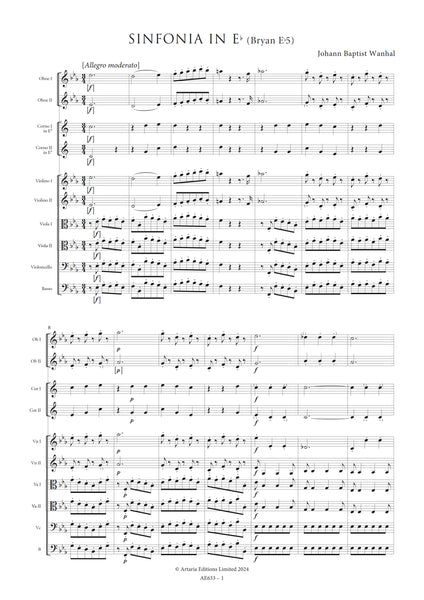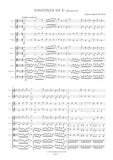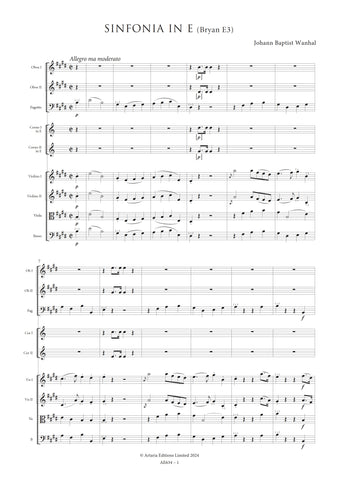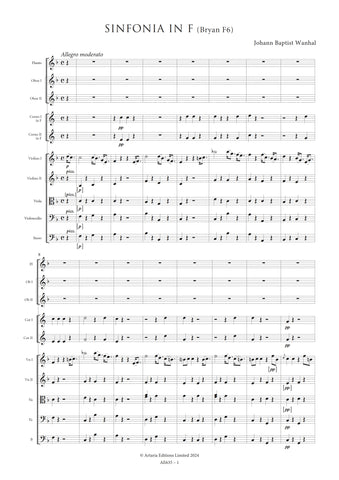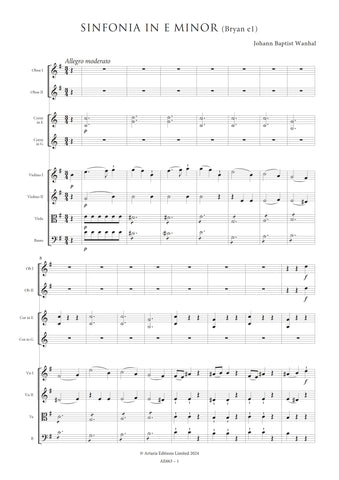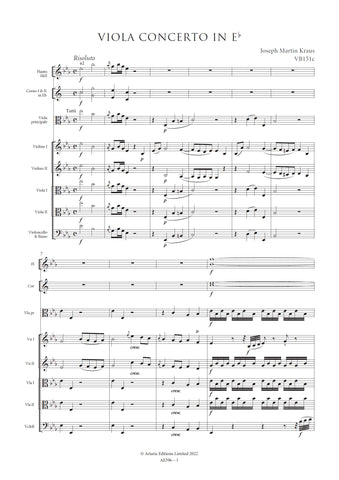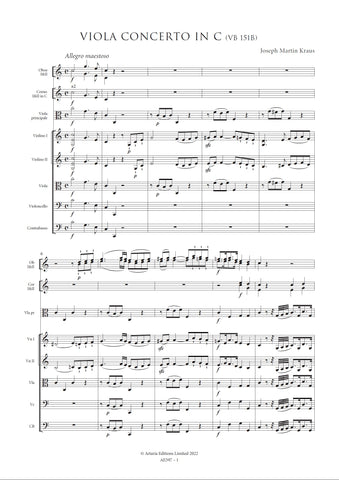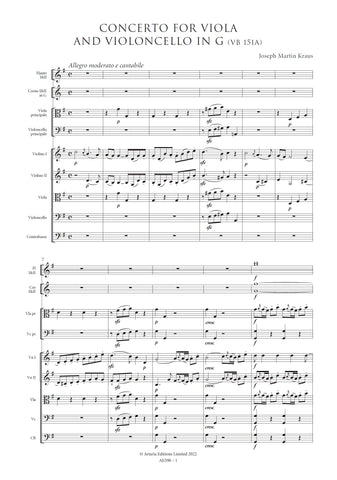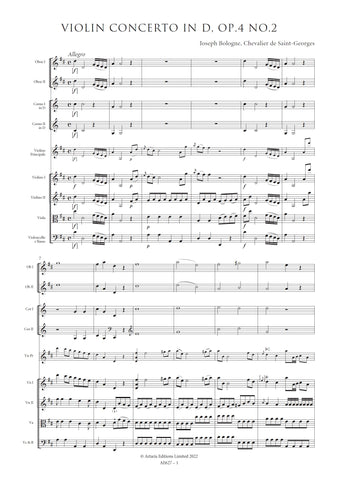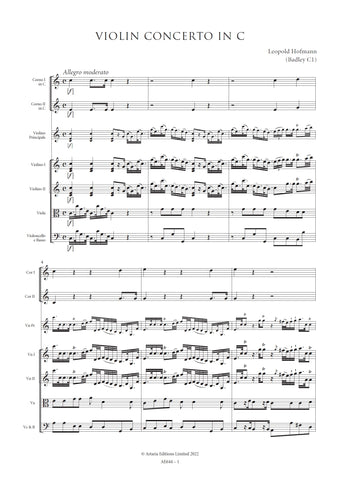Description |
Wanhal, Johann Baptist (1739-1813)
|
||||||||||||||||||
Details |
The present symphony dates from ca 1772–1773, and although only three copies of the work survive – in Prague, Regensburg and Wrocław – its listing in Supplement XII (1778) of the Breitkopf catalogue and inclusion in the so-called Quartbuch, a catalogue of a collection believed to have been made in the vicinity of Melk around 1775, suggest that it probably circulated reasonably widely during the eighteenth century. As is the case in all of Wanhal’s mature symphonies, Eb5 demonstrates his mastery of formal processes as well as considerable ingenuity in his manipulation of motivic material. Although the symphony is cast in three movements, omitting the Minuet and Trio, the central movement is highly unusual in consisting of alternating sections that are differentiated by tempo, metre and thematic material. The overall structure can be expressed schematically as ABABA (slow-fast-slow-fast-slow), with the second and third sections (B, A) largely confined to the dominant (F major) whereas the other sections are in the tonic (B flat). Wanhal employs two viola parts throughout the symphony, but the central movement, has parts for solo violin and violoncello. The two parts are independent in the sense that they are not playing in unison nor at the octave, but the writing is confined almost exclusively to shadowing each other at the tenth. What is potentially lost in terms of textural animation in adopting this process is compensated for in large measure by the warmth of sound and its differentiation from the outer movements with their pairs of oboes and horns. In the copy preserved in the Thurn und Taxis hofbibliothek in Regensburg, the two solo parts are also preserved in versions for clarinet should a change be desired or rendered necessary for some unforeseen reason. |
||||||||||||||||||
Score Preview |
Loading...
Error




